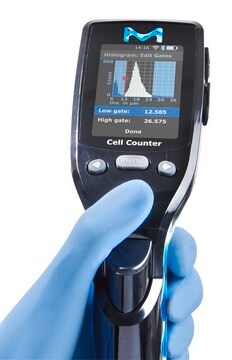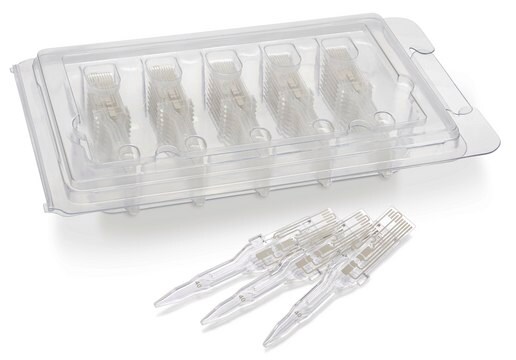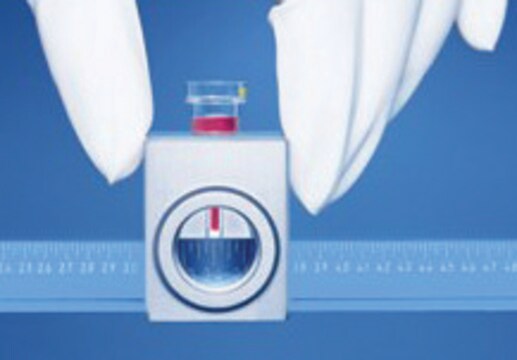PHCC20040
Scepter 2.0 Handheld Automated Cell Counter
Rapid cell counts in a handheld easy to use format, includes pkg of 40 μm Scepter Cell Counter Sensors
About This Item
Prodotti consigliati
Produttore/marchio commerciale
Scepter
tecniche
cell counting: suitable
Dimensione particelle
3-18 μm
Compatibilità
for use with cells sized 4-12 μm
Condizioni di spedizione
ambient
Descrizione generale
The Scepter cell counter’s screen displays:
Cell concentration
Average cell size
Average cell volume
Histogram of size or volume distribution
This system is intended for research use only and has been tested with cell types representative of those in use today.
FREE PACK OF 40μM Sensors included.
Applicazioni
Cell Culture
Componenti
1 Test Bead Vial
1 USB Cable
1 Downloadable Software
2 O-rings
50 Sensors (40µM)
Certificati d'analisi (COA)
Cerca il Certificati d'analisi (COA) digitando il numero di lotto/batch corrispondente. I numeri di lotto o di batch sono stampati sull'etichetta dei prodotti dopo la parola ‘Lotto’ o ‘Batch’.
Possiedi già questo prodotto?
I documenti relativi ai prodotti acquistati recentemente sono disponibili nell’Archivio dei documenti.
Articoli
How do you assess the state of your cell culture? We’ve got some best practices to share.
Assessing size distributions of cellular populations with the Scepter™ cell counter provides a quick, simple method for tracking T-cell differentiation.
Using the 40 µm aperture sensor, the Scepter cell counter can accurately and precisely count a broad range of cell types, including small cells such as PBMC and red blood cells.
Rapid Counting of Somatic Cells in Dairy Milk Using the Scepter™ 2.0 Cell Counter
Protocolli
The Scepter used in an application to count yeast cells.
The Scepter™ cell counter uses the Coulter principle of impedance-based particle detection to reliably and accurately count every cell in your sample.
Il team dei nostri ricercatori vanta grande esperienza in tutte le aree della ricerca quali Life Science, scienza dei materiali, sintesi chimica, cromatografia, discipline analitiche, ecc..
Contatta l'Assistenza Tecnica.



